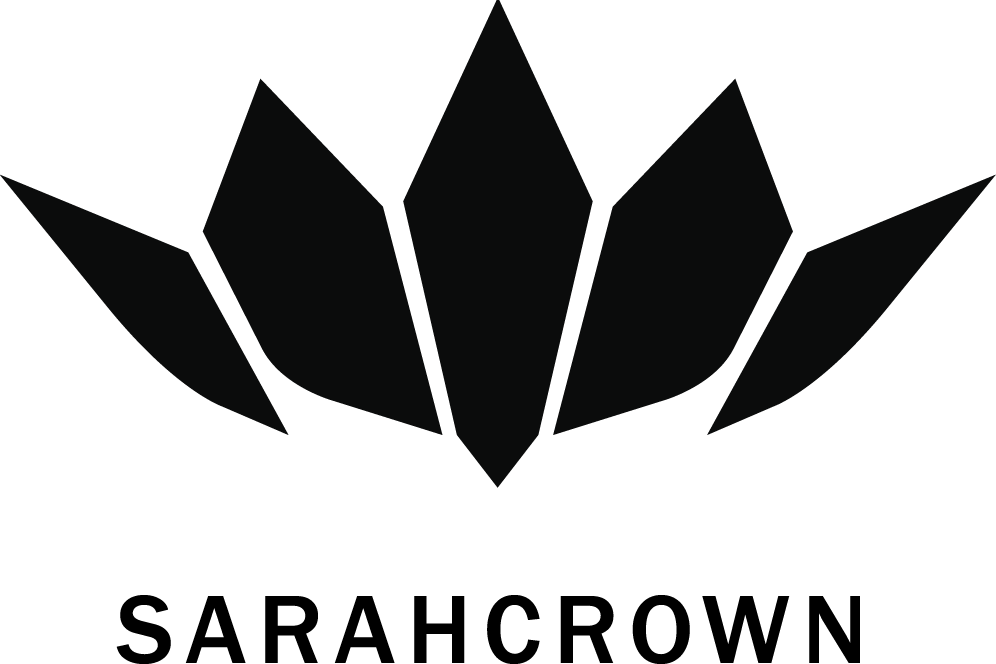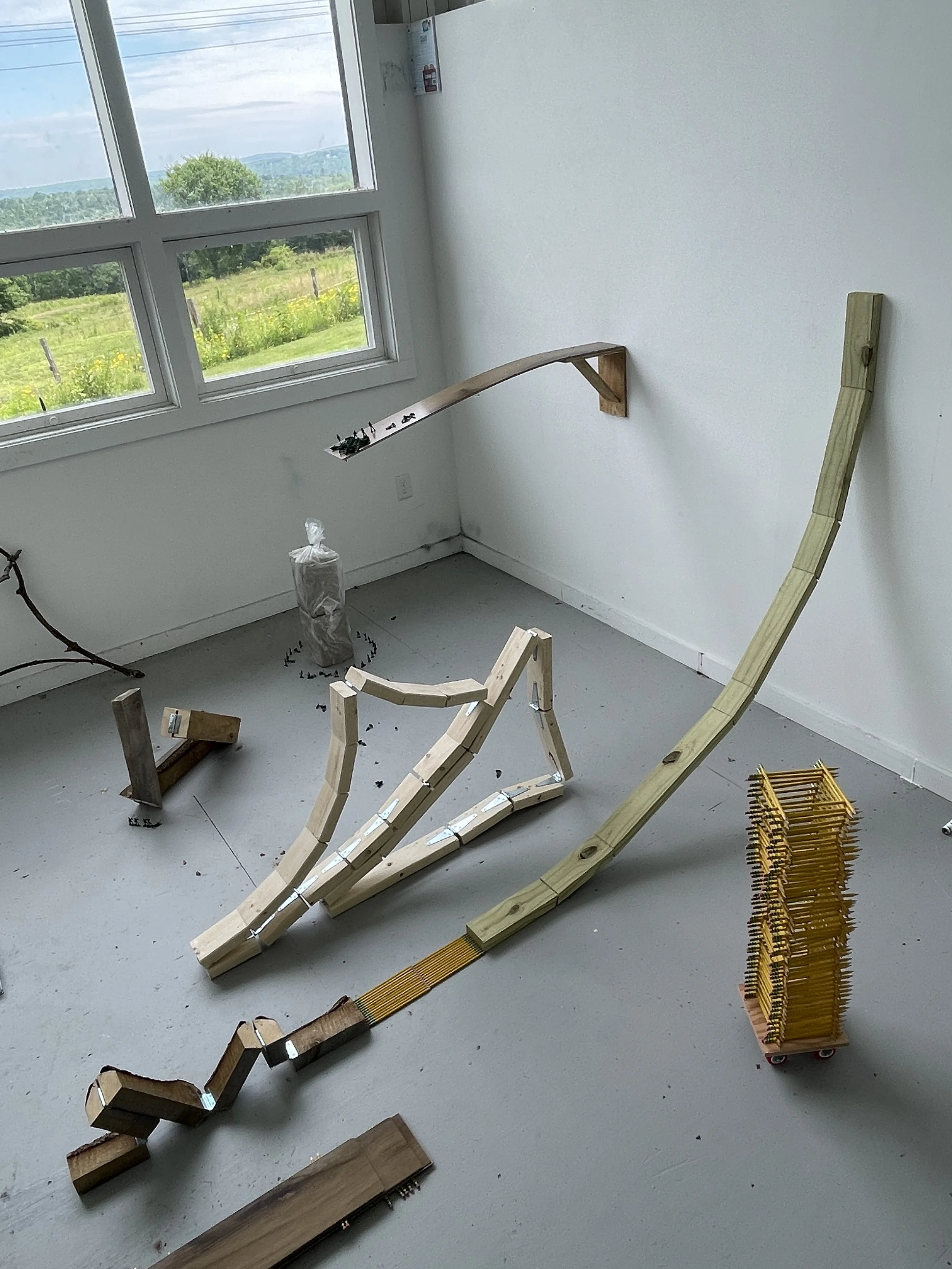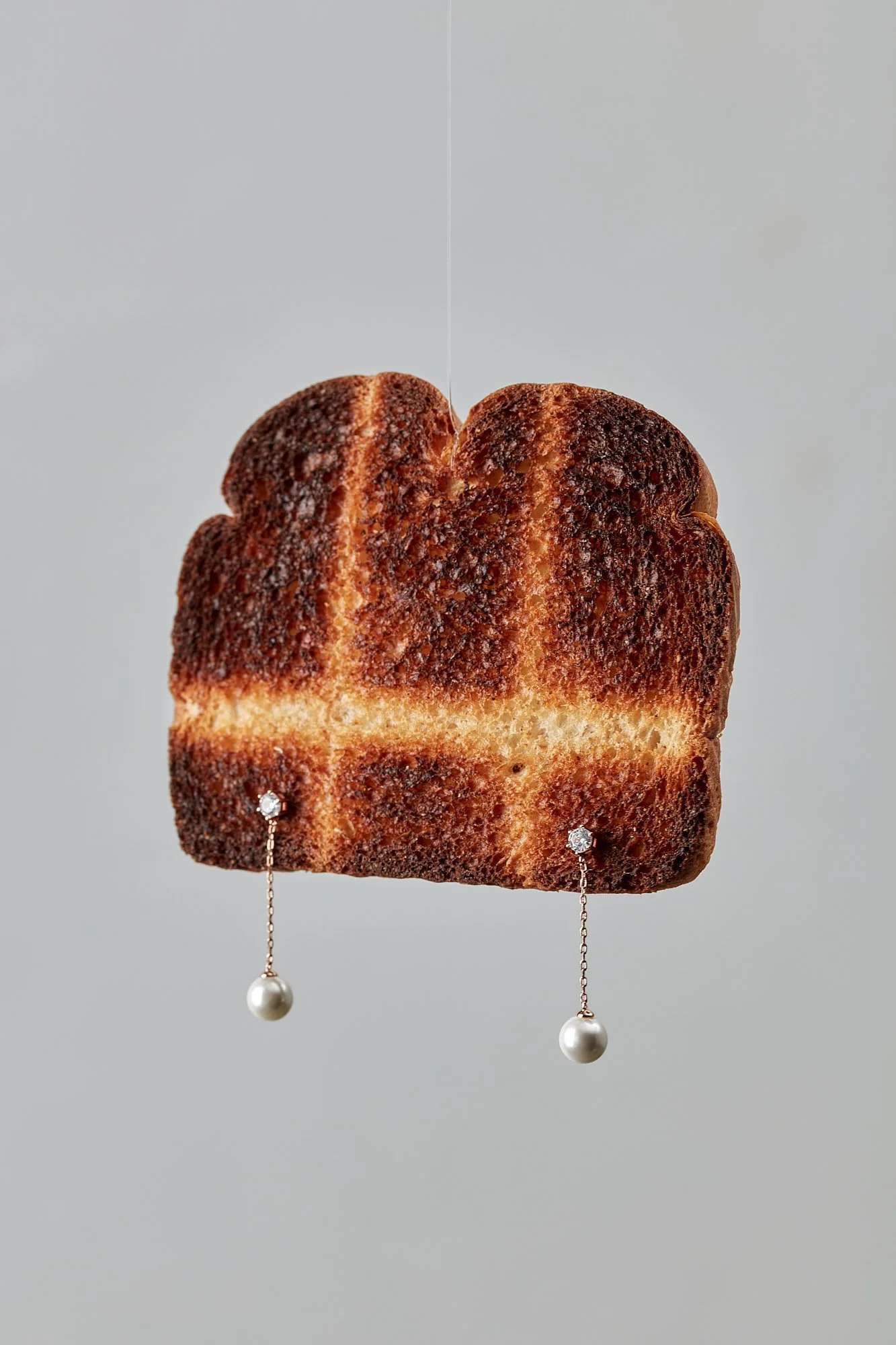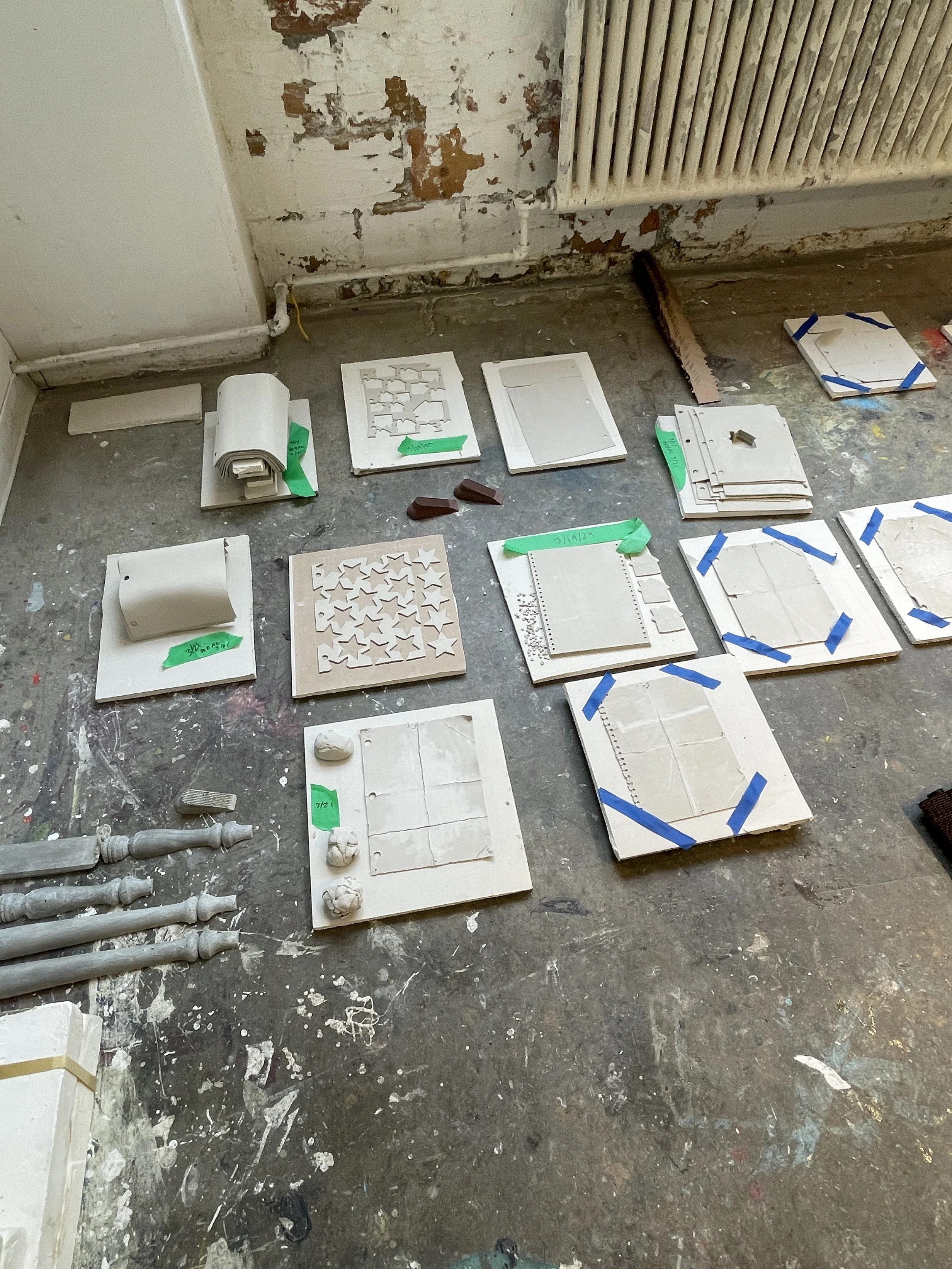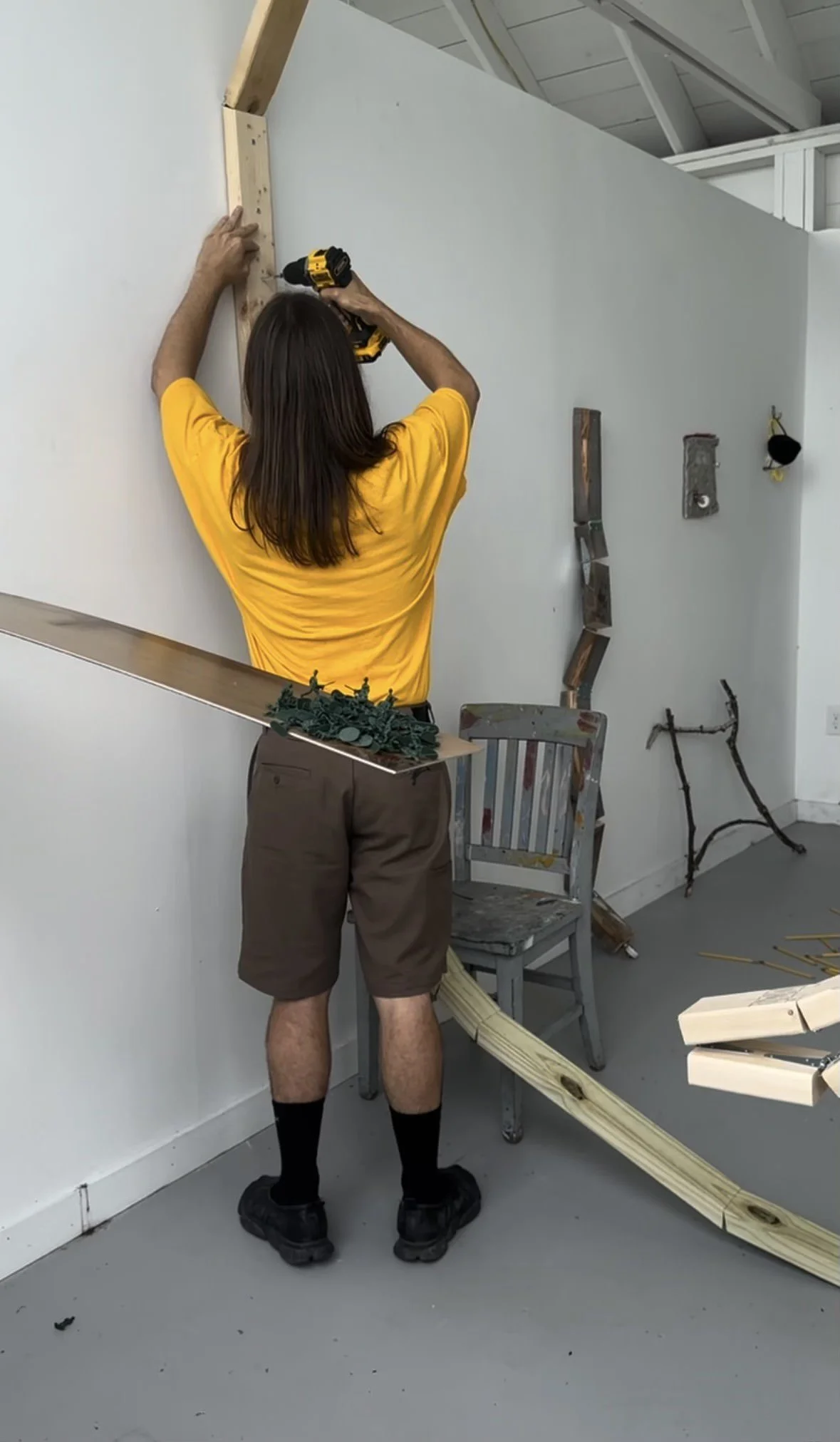Noah Pica in conversation with SARAHCROWN
We’ve been in love with Noah Pica’s work since seeing it for the first time at his Hunter MFA Exhibition last year. Read our wonderful conversation with him below.
1. Can you tell us about your artistic journey? What inspired you to start creating?
View of the studio practice
Both my parents are architects. I would listen to their conversations about space, light, design. They would always observe the world they were in, and by proxy I did, too. I carved out a way to get some basic art training when I was in high school, pumping my mom’s Prius around LA to every free art class available that had space. My heart was set on art school when I was applying to college, which fell far outside the norm from my peers. I studied fashion, and by graduation I felt an urge to get out of a single discipline. I wanted to make sculptures, furniture, and objects. Art, in a broad sense, had more flexibility aesthetically and technically. Plus I could exercise a bit more agency, make it a bit more personal, and not be beholden to a corporation or employment to facilitate ideas. After a few stops and starts in design, I weaseled my way through a few residencies and studio spaces, then took the leap and pursued an MFA. I’m still working in fashion, though, and I love that as an expression deeply. So I sit somewhere between two industries, finding avenues to hone my craft and create ideas.
2. How would you describe your style, and how has it evolved over the years?
House Pile (Loose Leaf Papers)
It’s always a bit tricky to define a style, especially when I don’t think of my work in terms of a specific style. That said, when I take a step back and look at my work through the years, it aesthetically feels clean and precise – but definitely handmade. I often start with a singular intervention, something that doesn’t alter the total appearance of an object. In using this approach, the origin object of each work is entirely legible. I want my work to feel complicated when in relation to the world or the other objects that I make, but I strive to have a singular, visual methodology expressed in each work. I am not sure if that is a style, per se, or just an observation. The aesthetics have shifted over the years, but I think the root way of thinking has been there since I began making work after college.
Sleepy Boy
3. Your practice spans several distinct series that engage with everyday objects in unique ways. A common thread throughout your work is the exploration of modular systems and the repurposing of an object’s original function. Could you elaborate on how these ideas shape your artistic approach?
I first started to work with uniforms, specifically the men’s tailored shirt, when in undergrad. I kept wondering why I was so attached to using such a ubiquitous garment as a starting point. Was it its familiarity? Was it on trend at the moment? There was this feeling of compulsion to use this extremely recognizable garment, but I couldn’t put my finger on why. As my fashion practice evolved into an art practice, I kept circling back to the same banal objects. The omnipresence of products became my focus. Their ability to be streamlined in order to be bought and sold. The prefabricated-ness.
Once I stopped making fashion exclusively, the objects and products in my world expanded, too. The through line became less about the signifiers in the original object, but instead the qualities that make them feel like products — which is, inevitably, modularity.
There’s a part of me that will always have my inner designer influence how I view art objects, so functionality — or playing with the potential of functionality — is a core “system” I employ in making.
Business Trip
4. What themes or messages do you aim to communicate through your work?
In my work, I contend with conventionality. I have really leaned into banality as a guiding mood. It’s a feeling I want to play with across different aspects of my practice.. What makes something feel banal, and what does that tell us about the status quo? Of course, I am trying to parse out something that is visually engaging, but I want a sense of banality to be embodied.
5. Can you walk us through your creative process? Do you have any rituals or routines?
I don’t have too many rituals, but I do have a “courting” process with the objects I use as starting points. There are different objects in my practice; whether it be a pencil, a tailored shirt, notebook paper, office furniture, bread etc. Although each of these are identifiable series, there is a process of “courting” these objects. Before one enters my world-building, I often cycle through 10 different objects that never quite click. I’ll see a product – something small and ubiquitous – and I’ll buy it. I’ll try two or three different methods to replicate it, alter its form, or warp it in some way. Most of the time I’ll yield a result that is somewhat interesting, but ultimately unsatisfying. Maybe it’s not adding anything new to my practice, or it required too many alterations to become unique. Sometimes the object’s weight becomes too fascinating: it has too much baggage. It’s not banal enough. These projects do not get shown, or they become stepping stones to other objects. Eventually I’ll hit something that makes sense, and the object is “courted”. I’ll make it within that series until I feel that it’s exhausted, and then I’ll let it rest. It’s really my only ritual - that and an extensive google calendar and a walk in the sunlight to break up my day.
Small, Medium, and Big Pile (Loose Leaf Papers)
6. Who or what are your biggest influences, both inside and outside the art world?
Inside the art world, I am most consistently influenced by Gober. The way he focuses on a single object and iterates on its form is a working methodology that resonates so deeply, and on occasion I have emulated him. There’s a wonkiness to Irwin Wurm’s artistic pursuits that really tickle me. Martin Creed is another artist whose quick-witted gestures accumulate into something greater than each individual part, and I admire that working style. Barbara Sánchez Kane is my contemporary icon, existing between art in fashion in a magical, intellectually stimulating, and ultimately very fluid relationship.
Outside of art, my influences come primarily from fashion. Since my early days in fashion school, Thom Browne’s emphasis on the banal uniform provide a conceptual commitment that I aspire to. Aesthetically, I find myself somewhere between Nicolas Ghesquiere and Jonathan Anderson. Miuccia Prada is my fashion god.
When it comes down to influences, I think I am interested mostly by processes and conceptual world building than I am by aesthetic outcome. When someone shows both breadth and commitment, they have the most command of my attention.
tan lines; cheap earrings
7. What is your favorite piece you’ve created and why? Is there a particular story behind it?
I have been finding myself returning to tan lines; cheap earrings (2022). I had been making work with pieces of sliced white bread for a few months. I challenged myself to use food as an installation material, and it came with some very weird and unstable outcomes. The whole series represents serious artistic growth for me – I loosened up my sculpture hand and stopped taking every material so seriously. Somewhere in that process, I put cheap costume earnings through a piece of toast that had such magical grill lines on it. It felt like a familiar character: a distinguished lady at the beach with overly tanned skin and jewels dripping over her one piece. There was a quickness and a wit to that piece that felt like a magic moment, where materials and humor aligned for me, even if only for a blip.
8. Works that really stuck with us during our studio visit are the note block sheets made of ceramics and the sculptures made with shirts. Could you tell us more about them?
The notebook paper emerged when I was taking a ceramic materials class at Hunter in my last year at the MFA. Pinned to my studio wall were images of paper piles in corporate office buildings. It felt familiar – mail solicitation and various paper ephemera are a constant presence on my kitchen counter and the spaces we all communally occupy. The consistency of piles in our lives, and how banal they make a space feel, intrigued me. I was experimenting with ceramic, thinking of how to make it as thin as possible, and recreating a sheet of paper felt natural to push the boundaries of the medium while focusing on one singular element. After many trials, I was able to get the sheet to shrink down to 8.5 x 11”, or standard American printer paper. The piles became more prominent and tall, pairing them with cardboard to celebrate them without use of a traditional pedestal, and the single sheets became more wonky and playful.
Dish Towels (Loose Leaf Papers)
The shirts have a much longer presence in my artistic thinking. They are my original object, having played with tailored shirts as a starting point since college. The shirts are always collared, with a traditional button front placket - that of every classic men’s wardrobe, school uniform, and business suit. The most recent sculptures are experimentations in different directions. sleepy boy (2023) is playing with integrating the shirt within a fitted sheet, thinking of a fantastical inbetween space of the most domestic and personal space - the bed - and the most outward and ubiquitous uniform shirt. An inflated mattress gives the form volume and animation. business boy has a different approach. I challenged myself to intervene on a purchased shirt without changing any of its elements - including keeping it folded up with tissue paper inside. I wanted to keep its product-ness fully intact. To intervene, I decided to ground the piece by grommeting holes through the folded shirt, and sticking caster wheels through.
9. How do you stay inspired, especially during creative blocks?
View of the studio practice
The more engaged I am in my studio or with artistic peers, the more inspired I tend to become. Having time, space, and motivation is the best way to stay plugged in to my own process. A big part of my experience in grad school was creating enough language, materials, and conceptual underpinnings to carry me through when my well feels a bit dry.
During a creative block, I tend to push harder – and oftentimes I look back and think that rest is best suited in those moments. My nature tells me to push, find ideas, and so often I will iterate until a new process or form emerges, one that can get me out of a creative block. Mixing up the routine of everyday life can wiggle me out of a creative block, too. Often I use grant proposals and applications as moments to reflect, create personally compelling ideas, and use that to generate new work - with or without a successful application. It's not such a bad thing to let a creative block run its course, and enjoy it as a period of observation and openness instead of production!
10. What role do you think art plays in society today?
Art, as I see it, is sensory research. It’s one way we process our world, where the stakes feel very high but are often very low. It’s the part of culture that allows some breathing room from objectivity. There’s really no answer that art can or should solve, it’s a series of questions and speculations that tickle us. It reflects culture and pushes it somewhere new.
11. What projects or exhibitions are you currently working on or planning for the future?
I have some irons in the fire that I don’t want to jinx by speaking too openly about them before they solidify. In the studio, however, I’ve been excitedly working on some modular clay lego pieces, investigating the limits of the ceramic sheet replicas, and flexing a fashion muscle with my designer partner. Lots of grant applications and writing!
In the studio with Noah Pica
ABOUT THE ARTIST
Noah Pica (b. 1994, Los Angeles, CA) is a multidisciplinary artist based in New York, NY. His practice explores themes of accumulation, transformation, and the intersection of material culture with personal and collective narratives. Working across various media, Pica engages with found objects, textiles, and performative elements to investigate the fluidity of identity, memory, and social structures.
Pica earned his MFA in New Genres from Hunter College, New York (2024), and a BFA in Apparel Design from the Rhode Island School of Design (2017). He also studied at Hogeschool voor de Kunsten Utrecht in the Netherlands during an exchange semester in 2016. His background in fashion and textiles informs his sculptural and installation-based work, weaving together tactile and conceptual inquiries.
His work has been exhibited in numerous group and two-person exhibitions, including Rent Free in Our Head (Off East 6th St., New York, 2024), No Reason for Such Moments to End (SARAHCROWN, New York, 2024), and Formula for a Group (205 Hudson Gallery, New York, 2024). His thesis exhibition at Hunter College, Slip (2023-24), explored the ephemeral nature of objects and space. Other notable exhibitions include Uncommon Senses (205 Hudson Gallery, 2022), Nobody’s Fashion Week (Flux Factory, 2020), and his runway presentation at New York Fashion Week (2017).
Pica has participated in prestigious residency programs, including Skowhegan School of Painting and Sculpture (2024), Textile Arts Center (2018-19), Vermont Studio Center (2017), and Kimmel Harding Nelson Center for the Arts (2017). His artist book Wearing the Wrong Uniform was published by Small Editions in 2022. His work is held in the collections of Harvard University, Temple University, The School of the Museum of Fine Arts at Tufts University, Virginia Commonwealth University, and The Walker Art Center.
